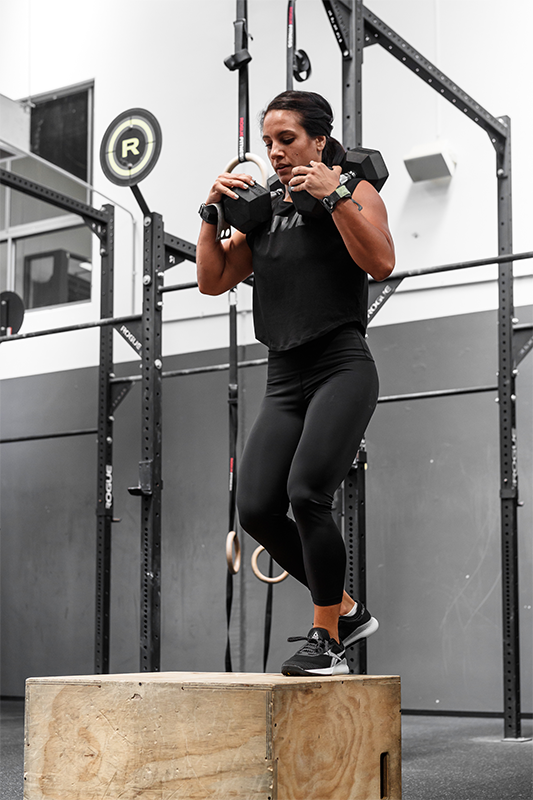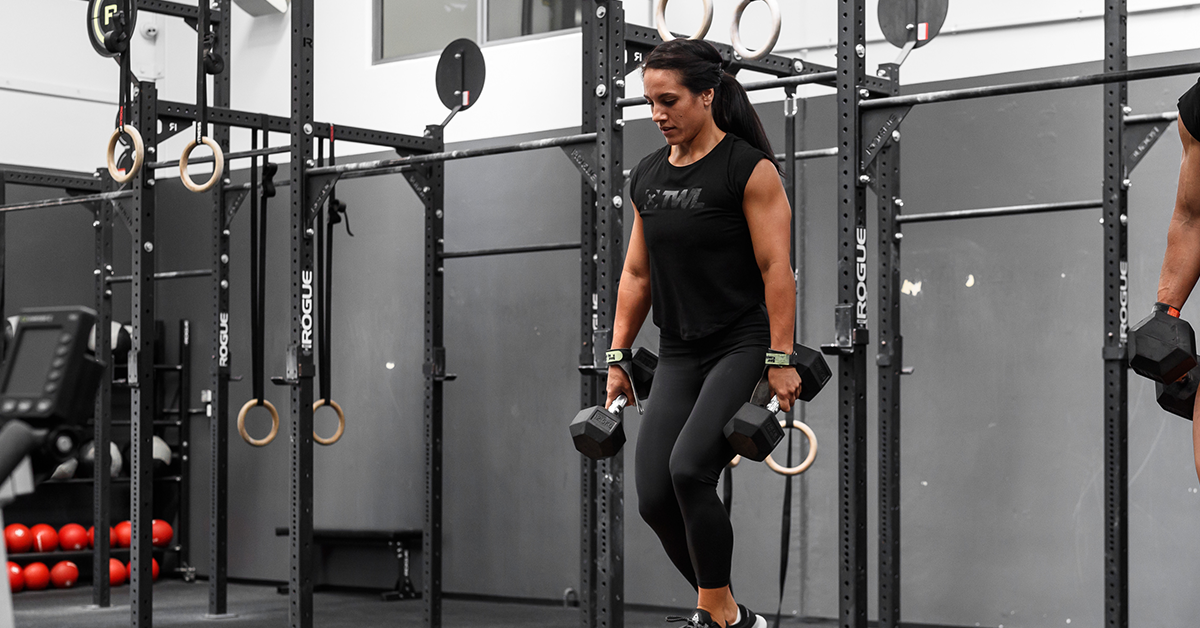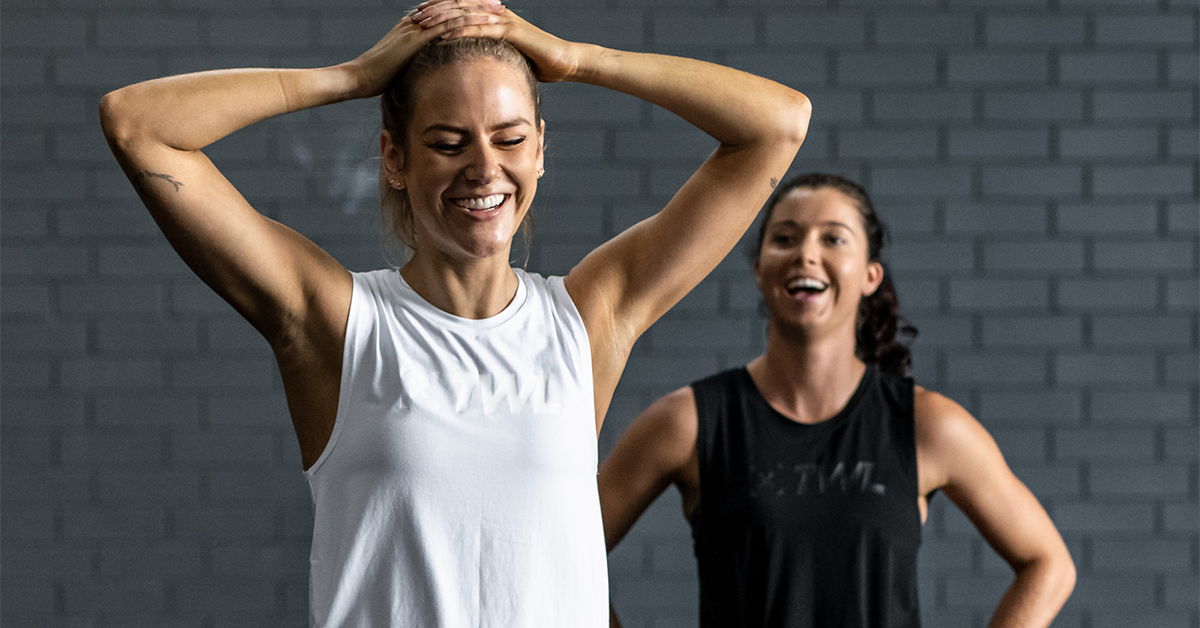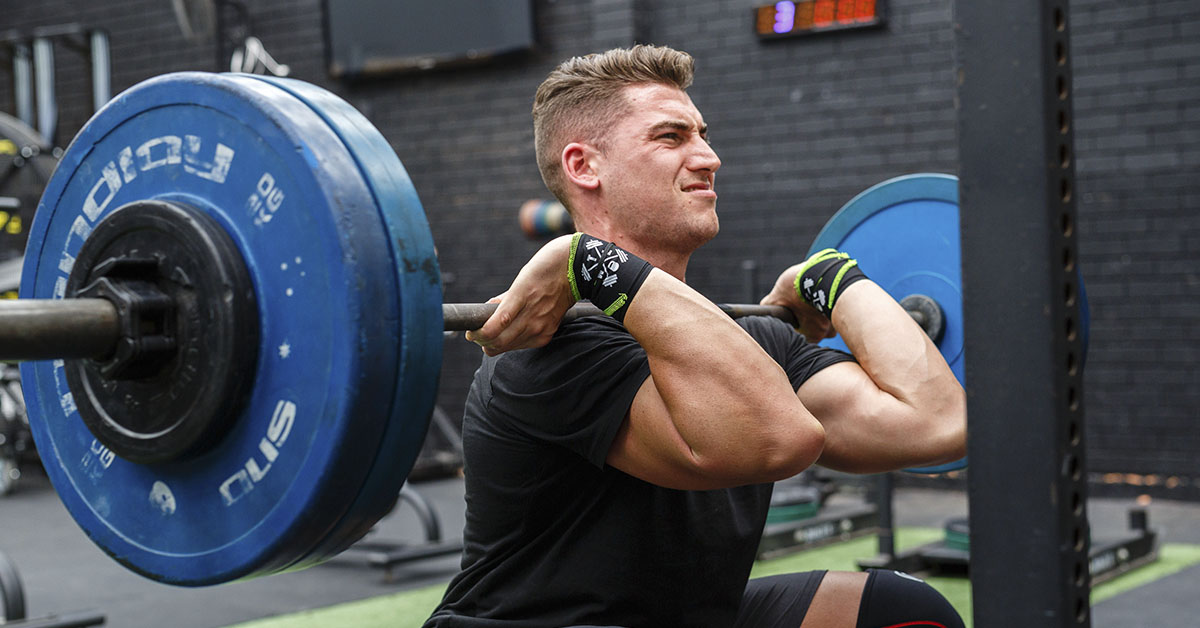You might be getting tired of your run-of-the-mill barbell squats. Ready to switch things up? Let’s swap out the apparatus and exchange your barbell for a set of dumbbells. The dumbbell squat offers a host of benefits and also leaves room for plenty of variations.
Let’s deep-dive into how to do a dumbbell squat, the benefits of the movement, and different types of dumbbell squats that you can work into your programming.
The Ultimate Guide to the Dumbbell Squat
First, let’s start with execution. There are a few main ways to perform a dumbbell squat, so let’s focus on those. We’ll get into variations in just a moment.
The Dumbbell Front Squat
This is going to mimic your standard barbell front squat. Hold one dumbbell in each hand and bring them to your shoulders. One end of each dumbbell should be resting on the cushioned part toward the front of the shoulder.
Think of keeping your eyes and chest up. This will prevent you from collapsing under the weight.
The Squat-Deadlift Hybrid
We love this one because it’s so simple. Hold one dumbbell in each hand, palms facing inward. Perform a squat — that’s it! You might notice that this one also somewhat mimics a deadlift.
The Dumbbell Goblet Squat
For this type of dumbbell squat, you only need one dumbbell. Grab hold of one end and hold the dumbbell vertically with both hands.
As we mentioned, there are many other ways of performing a dumbbell squat. Here are a few more variations using dumbbells:
- Overhead squats
- One-handed overhead squats
- Bulgarian split squats
- Jumping squats
- Cleans
- Single-leg (pistol) squats
- Squatting to a box or seat
The Benefits of Dumbbell Squats
Squatting is at the core of so much of what we do, both inside and out of the gym. You squat every day of your life, regardless of if you have additional weight on your back. Not only does it build general strength, but it’s also going to improve your speed, power, and explosiveness.
Dedicating time to squatting will pay dividends.
Let’s talk about the dumbbell squat muscles worked. It primarily targets the quads — the muscles on the front of your thighs. Technically, “quads” refers to a group of four smaller muscles. In addition, you’re going to get a great glute (read: butt) workout.
Your quads and glutes are a powerhouse. They’re responsible for so many of the movements you do. You cannot sit, stand, or walk without these muscles — never mind breaking a sweat in the gym.

It doesn’t end there, though. You can also expect dumbbell squats to challenge you:
- Hamstrings
- Calves
- Back
- Core
Yes, dumbbell squats can work your upper body, too! In fact, we argue that in large part, front squats are an upper-back workout.
Think about it: In order to keep those dumbbells stabilized, you need more than your lower half. You need your abs and back to keep you from collapsing or caving in.
So, are dumbbell squats effective even though you’re not lifting a heavily loaded barbell? Yes! It’s not all about how much weight you can lift.
A Note About Unilateral Dumbbell Squats
When we say “unilateral,” we mean one-sided. For example, Bulgarian split squats are a unilateral exercise because they work one side of the body at a time.
We always recommend that you incorporate some form of unilateral work into your training because this is ideal for detecting imbalances. For instance, you might find that one leg is noticeably stronger than the other.
The reason we care about these imbalances is that when one side is falling behind, the other side has to work harder to compensate. This can sometimes lead to injury on the side doing the majority of the work.
In terms of dumbbell squatting, and aside from Bulgarian split squats, other unilateral exercises include one-handed overhead squats, pistols, and lunges, which are technically a type of squat.
How Heavy Should You Go?
Another good question.
We will always encourage you to prioritize form first. If you attempt to go heavier — or do more reps — at the expense of technique, then you put yourself in a vulnerable place. Injury might follow.
You’ll also want to bear in mind that your grip is also getting a major workout here. In fact, your grip might be the limiting factor — and that’s totally okay.
Side note: These items will really come in handy!
Shop Now
Generally, you’ll be able to lift the most weight with the three core dumbbell squats we listed first: front squats, the squat-deadlift hybrid, and goblet squats.
For the variations, you’ll likely want to go down in weight.
We can’t tell you how much you should be lifting. One good rule of thumb is that if your workout is high-rep, it should be lower-weight. If it’s low-rep, it can be higher-weight.
And, as we said earlier, form comes first! You might not be straining under the pressure of 100kgs, but rest assured you’re still getting a workout.
Don’t underestimate the almighty dumbbell squat. It might look simple. It might look basic. But your body — and strength gains — are going to love them.
Did you enjoy this blog? You might like to learn about seven dumbbell exercises to tone your arms.

















